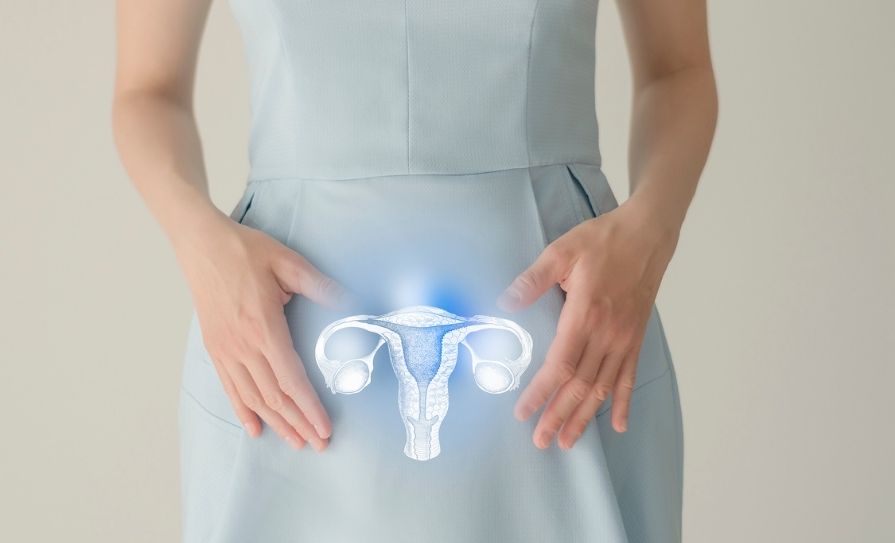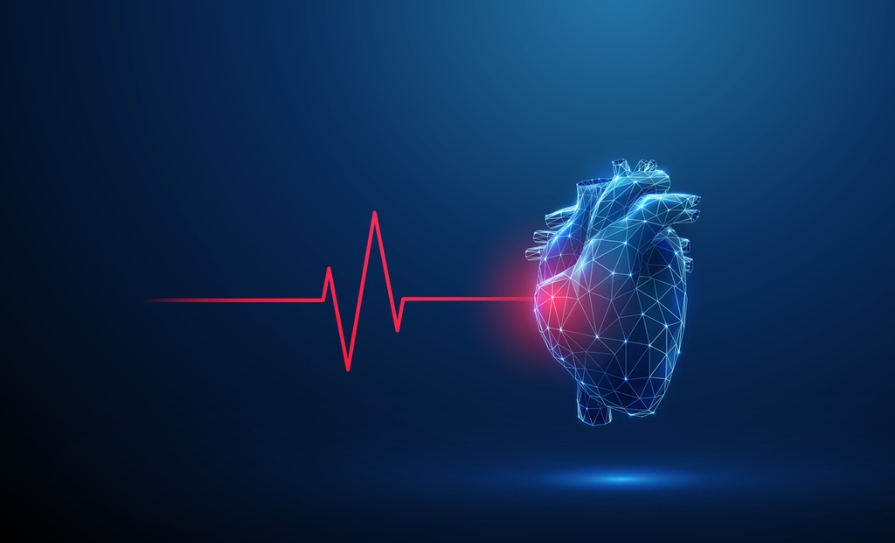A number of factors can contribute to the development of a migraine. Migraine is often confused with a ‘regular’ headache and can be debilitating if severe. On completion of this module, it is expected the reader will have an enhanced understanding of the pathophysiology of migraine, potential triggers, and management, including the right use of appropriate medications.
Introduction
Migraine is a complex neurological disorder characterised by moderate-to-severe headaches that are often accompanied by nausea, photophobia and phonophobia. Migraine attacks typically last for hours to days and are associated with a reduced ability to function, which worsens with physical activity. They can significantly impact daily activities and reduce the quality of life for individuals.
Migraine attacks are both recurrent and complex neurological events. Migraine is a prevalent condition worldwide, affecting approximately 12 per cent of the population. It is approximately three times more prevalent in females than males, with up to 17 per cent of females and 6 per cent of males affected annually. It tends to peak between the ages of 35 and 39 and decreases later in life, especially after menopause.
Community pharmacists play an important role in managing this complex condition. Pharmacists counsel patients on the proper use of medication and the importance of adherence. They can also educate patients on lifestyle modifications and warning signs that require referral while collaborating with other healthcare professionals.1
Pathophysiology
The pathophysiology of migraine is not fully understood, but is thought to involve a combination of genetic, vascular and neurological factors. The pathophysiology is very complex, but understanding it is important for effective diagnosis and treatment. Migraine has a very strong genetic component, although a specific inheritance pattern hasn’t been fully identified. The risk of migraine in an individual with a close family relative who has migraine is three times greater than in an unaffected individual. However, the genetic basis of migraine is still not fully known and involves multiple genes and loci.1
The pathophysiology of migraine involves complex interactions between the peripheral and central nervous systems. One key mechanism is cortical spreading depression, which is a wave of neuronal depolarisation followed by inhibition that spreads across the brain. This is considered responsible for the aura phase of migraine, triggering subsequent changes in brain activity.
The activation of the trigeminovascular system plays an important role in migraine pathogenesis. This involves the trigeminal nerve, which releases vasoactive neuropeptides like substance P, calcitonin gene-related peptide (CGRP) and neurokinins. These neuropeptides contribute to neurogenic inflammation, vasodilation and increased pain sensitivity. CGRP is a key mediator in migraine, with elevated levels observed in individuals with chronic migraine.
Neurogenic inflammation can lead to central sensitisation, a process in which neurons become
more responsive to stimuli and potentially contribute to the transition from episodic to chronic migraine. Additionally, serotonin is thought to play a role in migraine pathophysiology. Reduced serotonin levels are associated with migraine onset, and serotonin modulates pain pathways and may influence headache severity.1
Background on migraine
Migraine is a chronic neurological disorder that is characterised by recurrent moderate-to-severe headaches. These headaches are typically unilateral, with a pulsating or throbbing nature. They are generally worsened by physical activity and may be accompanied by nausea, vomiting, and sensitivity to light and sound.
Migraine attacks tend to last for four-to-72 hours and may include aura, which is a series of neurological disturbances (visual changes, sensory symptoms or speech difficulties) that precedes or accompanies the headache. Migraine attacks generally progress through four main phases, each with distinct features.
- Prodrome: Premonitory symptoms experienced for up to 48 hours before the onset of a migraine. Common symptoms include yawning, lethargy, mood changes, photophobia, phonophobia and restlessness.
- Aura: The aura phase may precede the headache or present simultaneously. They are typically gradual and fully reversible, lasting for up to 60 minutes. Visual auras are the most common, though sensory, motor and language auras are also possible.
- Headache: The headache phase typically lasts four-to-72 hours, often increasing in intensity within the first few hours. The pulsating pain may be accompanied by nausea, vomiting, photophobia and phonophobia.
- Postdrome: This phase involves symptoms that persist after the headache phase. Movement may cause pain in the location of the headache, with other symptoms including exhaustion and difficulty concentrating.1
Exposure to or withdrawal from various factors can contribute to the onset of migraine. Migraine triggers vary widely among individuals, with many reporting identifiable trigger factors. Some trigger factors are probable contributors, while others are possible or unproven. Some potential trigger factors are listed below:
- Generalised stress.
- Hormonal changes.
- Missed meals.
- Caffeine – excessive intake or abrupt withdrawal.
- Irregular sleep patterns.
- Medications.
- Alcohol.
- Odours.
- Physical exertion.
- Weather changes.
- Medication overuse.1,2
The diagnosis of migraine is based on the patient’s history, a physical examination, and the application of diagnostic criteria. The International Classification of Headache Disorders (ICHD-3) has developed criteria for diagnosis. It is complex but structured, and is based on the symptoms a patient may have. Accurately diagnosing migraine involves distinguishing it from other types of headaches and neurological conditions.
Differential diagnosis must consider factors and symptoms that overlap with other disorders, including tension- type headache, cluster headache, cerebral aneurysms, encephalitis, intracranial haemorrhage, and meningitis. Neuroimaging, such as computed tomography (CT) scans or magnetic resonance imaging (MRI), may be necessary if secondary causes, including brain tumour, meningitis or stroke, are suspected.1
The ICHD-3 classifies migraines into several subtypes:
- Migraine without aura is the most prevalent type of migraine, accounting for approximately 70 per cent of migraines. It involves recurrent headache attacks lasting four-to-72 hours without the neurological symptoms associated with aura.
- Migraine with aura is characterised by fully reversible neurological symptoms lasting up to 60 minutes. It is estimated that 25 per cent of migraines involve aura.
- Chronic migraine is defined as a headache on at least 15 days per month, with features of migraine present on at least eight days. Chronic migraine Is highly debilitating and significantly reduces quality of life.
- Probable migraine presents with migraine-like symptoms but lacks one of the features required to meet the diagnostic criteria for migraine and does not meet the criteria for another type of headache.1
Non-pharmacological treatment
Non-pharmacological treatment is an important aspect of migraine management. These approaches can
be used alongside pharmacological treatments. They are particularly useful when other treatment options fail or are contraindicated, which can be important in specific patient groups such as pregnant women or adolescents. These methods generally offer an excellent safety profile when practised correctly.3
There are several lifestyle modifications that may help patients with migraine. Many trigger factors can precipitate a migraine attack; therefore, identifying and limiting exposure to these factors is an important aspect of the non-pharmacological management of migraines. Furthermore, patients may feel a sense of control over their condition by being aware of potential triggers. Individuals should aim to maintain a regular sleep pattern, balanced diet, adequate hydration, regular exercise, a consistent meal schedule, limit caffeine intake, smoking cessation, and limit alcohol intake.3
A migraine diary is a simple but effective method of managing migraine. It can help individuals establish certain patterns or identify specific triggers of migraine attacks. The diary should be maintained systematically over time to identify migraine patterns and facilitate effective management. Close attention should be paid to environmental, lifestyle and dietary factors in the hours and days before a migraine attack. Additionally, the diary allows an individual to monitor the success or failure of treatment.3
Stress management techniques, including cognitive behavioural therapy, relaxation techniques and meditation, may be effective in migraine prevention. Generalised stress is one of the most common trigger factors; therefore, reducing stress can help decrease migraine frequency.
Acupuncture is an alternative therapy that may benefit individuals with episodic migraine. When performed by a trained practitioner, acupuncture is safe and associated with a low incidence of adverse effects.
Dietary supplements may also have effectiveness in the management of migraine. Riboflavin (400mg daily), coenzyme Q10 (300mg daily) and magnesium (400-600mg daily) may serve as preventive measures against migraine. Evidence suggests they may be effective in managing migraine, particularly chronic migraine. These supplements are typically well-tolerated and are associated with a low incidence of adverse effects. However, more research is needed on the efficacy and safety of these supplements, including their interaction with other medications.
Botulinum toxin A injections have been proven effective in treating chronic migraines and are established as a well- tolerated prophylactic treatment option when other pharmacological methods have failed.3,4
Pharmacological treatment
The pharmacological treatment of migraine involves a multifaceted approach aimed at alleviating symptoms, preventing attacks, and improving patients’ quality of life. Pharmacological management includes both acute and preventive treatment approaches. Effective management requires both acute treatments to relieve symptoms during a migraine attack, and prophylactic strategies to reduce the frequency and severity of attacks.1,5
Acute treatment
Acute pharmacological therapy aims to relieve the pain and associated symptoms during the headache phase of migraine. Treatment should typically be initiated as soon as possible during this phase. The response to treatment may vary considerably between patients. A stepwise approach to treatment should be followed to achieve the safest and most effective therapy; combination therapy may also be considered.5
Nonsteroidal anti- inflammatory drugs (NSAIDs) NSAIDs are first-line acute treatment for mild-to-moderate migraine attacks. They work by blocking the cyclooxygenase enzymes. This inhibits the synthesis of prostaglandins, which are mediators involved in inflammation and pain. NSAIDs are available over the counter (aspirin and ibuprofen) or on prescription (celecoxib, etoricoxib, diclofenac, meloxicam, naproxen, dexketoprofen and mefenamic acid).
If an NSAID is ineffective, switching to another drug class or using an NSAID as part of combination therapy may be considered. A significant proportion of patients with acute migraine may experience nausea and vomiting, which can prevent them from tolerating oral tablets. Diclofenac suppositories may be considered to ensure the medication enters systemic circulation. The adverse effects of NSAIDs include gastrointestinal discomfort, gastrointestinal bleeding, hepatotoxicity, reduced kidney function, hypertension, and thromboembolic events.1,5,6
Paracetamol
Paracetamol is an option for the acute treatment of migraine. Although it is not as effective as NSAIDs, it can be useful when NSAIDs are not tolerated or are contraindicated. It is available over the counter in Ireland. It has an excellent safety profile when used correctly and is particularly useful for treating migraines in certain populations, such as adolescents and pregnant women.5
Triptans
Triptans are effective in the acute treatment of moderate-to-severe migraine and menstrual migraine. Sumatriptan, zolmitriptan, eletriptan, naratriptan, rizatriptan, frovatriptan, and almotriptan are licensed for the treatment of migraine, but they tend to be more expensive than NSAIDs. Triptans are pharmacologically specific for acute migraine treatment and can be used as monotherapy or in combination with other acute treatment options. Unlike NSAIDs, patients who do not respond to one triptan may respond to another, necessitating individualised treatment.
Triptans are serotonin-receptor agonists with affinity for the 5-HT1B and 5-HT1D receptors. The agonism of 5-HT1B receptors on the smooth muscle cells of blood vessels causes vasoconstriction of dilated blood vessels, thereby reducing the pulsating or throbbing pain. Agonism of 5-HT1D receptors on the trigeminal nerve prevents the release of vasoactive neuropeptides, such as CGRP, substance P and neurokinins.1,5,7
Triptans should be administered at the onset of the headache phase rather than during the aura phase.
If the first dose of a triptan relieves symptoms but the headache returns, the dose can be repeated after two hours. Similarly, if there is a partial response to the first dose, the dose can be repeated after two hours.
Sumatriptan 50mg tablets are now licensed as a pharmacy-only medicine for acute treatment of migraine when a diagnosis of migraine has been previously made by a physician. This ensures timely access to healthcare while reducing the burden on the healthcare system.
A pharmacist carries out a structured consultation with the patient, considering cardiovascular risk and medication overuse headache. Triptans
Triptans are effective in the acute treatment of moderate-to-severe migraine and menstrual migraine
are generally well tolerated. Common adverse effects include pressure in the chest, throat and jaw, fatigue, myalgia, flushing, paraesthesia and dizziness. Triptans should be avoided in patients with uncontrolled hypertension, ischaemic heart disease, and cerebrovascular conditions. Patients taking serotonergic medications concurrently should be monitored for the risk of serotonin syndrome.5,7,8
Antiemetics
Antiemetics are often required for the acute treatment of migraine, particularly in moderate-to-severe cases where nausea and vomiting are present. They are also beneficial in managing migraine-induced gastric stasis, a condition characterised by delayed gastric emptying and reduced peristalsis, causing stomach contents to remain in the stomach longer instead of passing into the duodenum. This delay can impair the absorption and effectiveness of orally administered migraine medications.
Prokinetic agents, such as domperidone, metoclopramide, and prochlorperazine, enhance gastrointestinal motility, promoting gastric emptying and improving the absorption of acute migraine treatments. These medications provide a dual benefit by alleviating nausea and vomiting while also counteracting gastric stasis, even in patients without nausea and vomiting.
Parenteral formulations of antiemetics may be preferred for patients unable to tolerate oral medications. Metoclopramide, a benzamide, acts as a dopamine D2 receptor antagonist at lower doses and also inhibits serotonin (5-HT3) receptors at higher doses. Prochlorperazine and chlorpromazine primarily block D2 receptors, providing both antiemetic and migraine-relieving effects. However, most antiemetics used in migraine treatment carry a risk of QT interval prolongation and the development of torsades de pointes. Additionally, dopamine antagonists like metoclopramide, prochlorperazine and chlorpromazine may cause extrapyramidal side-effects, such as dystonia, tardive dyskinesia, and akathisia.5,7
Opioids
Opioids are not recommended for the acute treatment of migraine due to their limited efficacy, lack of migraine specificity, risk of adverse effects, and risk of medication overuse headaches. Opioids are associated with numerous adverse effects, including constipation, respiratory depression, and the potential for dependence, abuse and tolerance.
Medication overuse headache develops and worsens with the frequent use of acute migraine treatments. This occurs due to sensitisation of the central nervous system. Opioids carry a high risk of medication overuse headache and should therefore be avoided. The use of acute migraine treatments, including NSAIDs and triptans, should be limited to a maximum of two days per week to reduce this risk. This can limit the effectiveness of prophylactic treatment, and many patients with chronic migraine experience associated medication overuse headache.5,9
Prophylactic treatment
Prophylactic pharmacological treatment may be offered to patients whose quality of life remains impaired despite acute treatment. Preventive treatment is indicated in two main cases: (i) when an individual experiences four or more migraine attacks per month, or (ii) when migraine attacks last longer than 12 hours. The primary objectives of treatment are to achieve at least a 50 per cent reduction in headache days or a 50 per cent reduction in the disability associated with attacks.
The selection of prophylactic therapy should be evidence-based, considering safety, efficacy and comorbidities. Titrating slowly to the maximum effective tolerated dose for a minimum of three months is recommended before deciding on effectiveness. If there is no improvement after three months at the maximum tolerated dose, the treatment may be considered a failure, and alternative options should be explored. A migraine diary is useful in this regard.
Gradual withdrawal may be considered after six-to-12 months of effective treatment to evaluate the necessity of ongoing therapy.5
Propranolol
Propranolol is a non-selective beta- adrenergic receptor antagonist that is first-line treatment for migraine preventive therapy. It is also used to treat hypertension, angina, essential tremor and anxiety. It is recommended to start at 80mg once daily in a prolonged- release formulation, increasing up to 160mg daily. Higher doses are unlikely to provide additional benefit and carry a greater risk of adverse effects. Propranolol can be particularly useful when anxiety is a comorbid condition. Common adverse effects include nausea, gastrointestinal pain, constipation, and hypotension. It is contraindicated in patients with asthma due to its non- selective antagonism of beta-2 receptors in the lungs.5,10
Amitriptyline
Amitriptyline is a tricyclic antidepressant licensed to treat multiple conditions and is effective for migraine prophylaxis. It is also used to treat major depressive disorder, neuropathic pain, chronic tension-type headache, and nocturnal enuresis in children. It works by blocking the reuptake of both serotonin and noradrenaline, thereby increasing noradrenergic and serotonergic neurotransmission. It is initiated at 10mg at night and increased weekly up to a maximum of 100mg daily. It may be particularly useful for patients who also suffer from insomnia.
Common adverse effects of amitriptyline include dry mouth, drowsiness, dizziness, constipation and weight gain. Rarer but more serious adverse effects include hepatotoxicity, abnormal heart rhythm, glaucoma and serotonin syndrome.5,11
Topiramate
Topiramate is an anticonvulsant that serves as a first-line prophylactic treatment option for migraine. It works by increasing GABA activity and inhibiting glutamate activity, blocking neuronal excitability and thereby preventing seizures and migraines. Topiramate also inhibits the release of CGRP and glutamate from trigeminal neurovascular nerve endings. The starting dose is 25mg once daily, titrating up to 50-to-100mg daily.
Common adverse effects of this drug include tingling, fatigue, gastrointestinal pain, loss of appetite, weight loss, and decreased cognitive function. Topiramate is also associated with a risk of teratogenicity, which should be carefully considered.
Sodium valproate is another anticonvulsant that may be used in rare cases, though its use is limited due to safety concerns. A pregnancy prevention programme must be implemented for women of childbearing potential due to its teratogenic nature.5,12
Candesartan
Candesartan is an angiotensin receptor blocker traditionally used to treat hypertension and heart failure, but it has also been used for migraine prevention in recent years. It works by blocking
the angiotensin II receptor. The use of candesartan for migraine prevention is considered off-label, differing from its licensed indications in the summary of product characteristics. It is typically administered at a daily dose of 16mg, which can be split into 8mg twice daily.
Candesartan is particularly useful in patients with hypertension as a comorbid condition. It is a relatively well- tolerated drug, with the adverse effects including hypotension, abnormal renal function, and hyperkalaemia.5,13
Calcitonin gene-related peptide (CGRP) antagonists CGRP antagonists are the only class
of migraine prophylactic treatments developed specifically for migraines, unlike other treatments developed for different indications. CGRP is fundamental in the pathophysiology of a migraine attack, mediating vasodilation and neurogenic inflammation. These medications target CGRP or its receptor, leading to long-term blockade and serving as an effective method of migraine prophylaxis. This class of medication is effective as preventive treatment and may have fewer adverse effects.
There are two classes of CGRP inhibitors: Injectable monoclonal antibodies (mAbs) against the CGRP receptor, and oral CGRP receptor antagonists (gepants). These drugs are indicated for individuals with more than four migraine days per month when at least three prophylactic drug treatments have failed.7,14
Erenumab, fremanezumab and galcanezumab are mAbs licensed for monthly subcutaneous injection
for migraine prophylaxis. They are supplied through the High-Tech scheme in Ireland and prescribed under the care of a consultant. Clinical benefits may be observed within a few weeks. Eptinezumab is administered as a quarterly intravenous infusion in a hospital setting. They are generally well-tolerated, with possible adverse effects including injection site reactions, hypersensitivity and gastrointestinal discomfort.7,14
Gepants are small-molecule CGRP receptor antagonists administered orally. They are effective in both the acute and prophylactic treatment of migraine, with rimegepant and atogepant as examples. Rimegepant is administered once daily as required for acute treatment, indicated when at least two triptans have failed or are contraindicated, and NSAIDs have been ineffective. It is also indicated for migraine prophylaxis on an alternate-day dosing schedule for patients experiencing four or more migraine attacks per month when at least three prophylactic treatments have failed. Adverse effects of gepants include nausea, weight loss, fatigue, and hypersensitivity.7,14
Role of the pharmacist
Pharmacists play a crucial role in the management of migraines by providing patient education, optimising treatment regimens, and promoting medication adherence. Pharmacists are accessible healthcare professionals and can help patients identify potential migraine triggers and provide counselling on lifestyle modifications that may reduce attack frequency.
Pharmacists can advise on the appropriate use of over-the-counter medications to treat migraines. Furthermore, they can provide counselling on medication regimens to improve efficacy, minimise adverse effects, enhance medication adherence, and prevent medication overuse headache. In conclusion, a pharmacist’s role in patient counselling, medication management
and collaboration with other healthcare professionals makes them integral to improving clinical outcomes and enhancing patients’ quality of life.
References
1. Pescador Ruschel MA, and De Jesus O (2024). Migraine headache. [online] PubMed.
2. Martinelli D, Pocora MM, De Icco R, Putortì A, and Tassorelli C (2022). Triggers of migraine: where do we stand? Current Opinion in Neurology, 35(3), pp.360–366.
3. Haghdoost F, and Togha M (2022). Migraine management: Non-pharmacological points for patients and health care professionals. Open Medicine, [online] 17(1), pp.1869–1882.
4. Becker WJ (2020). Botulinum Toxin in the Treatment of Head- ache. Toxins, 12(12), p.803.
5. Mayans L, Walling A (2018). Acute Migraine Head- ache: Treatment Strategies. American family Physician, [online] 97(4).
6. Pardutz A, and Schoenen J (2010). NSAIDs in the Acute Treatment of Migraine: A Review of Clinical and Experi- mental Data. Pharmaceuticals, [online] 3(6), pp.1966–1987.
7. Lew C, and Punnapuzha S (2023). Migraine Medications. [online] PubMed.
8. Pharmaceutical Society of Ireland (2025). Guidance for Pharmacists on the Safe Supply of Sumatriptan 50mg Tablets | PSI. [online].
9. Casucci G, and Cevoli S (2013). Controversies in migraine treatment: Opioids should be avoided. Neu- rological Sciences, 34(S1), pp.125–128.
10. Shahrokhi M, and Gupta V (2023). Propranolol. [online] PubMed.
11. Amit Thour and Raman Marwaha (2023). Amitripty- line. [online] Nih.gov.
12. Fariba K, and Saadabadi A (2020). Topiramate. [online] PubMed.
13. Bulsara KG, and Makary- us AN (2020). Candesartan. [online] PubMed.
14. Rashid A, and Manghi A (2022). Calcitonin Gene- Related Peptide Receptor. [online] PubMed.







